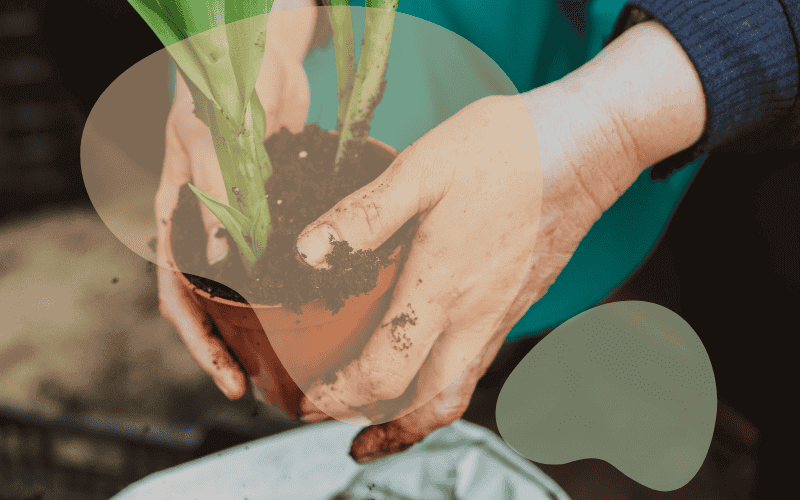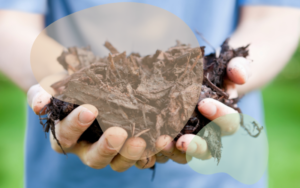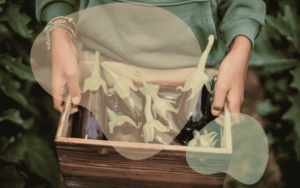Gardening is more than just a hobby—it is a lifestyle that connects us to nature, provides a sense of accomplishment, and contributes to a healthier environment. If you are considering starting a garden, you are about to embark on an exciting journey filled with learning and growth. Whether you have a spacious backyard or a small balcony, there is no better time to start than now.
This is a comprehensive beginner’s guide to gardening, offering insights from soil preparation to plant selection. Our aim is to give you the confidence to begin your gardening adventure. We will walk through each step, ensuring that every phase, from the first seed you plant to the care you provide for your garden, is manageable and rewarding.
Gardening Basics: Where to Begin
Starting a garden may feel intimidating at first, but the process is truly about taking small, manageable steps. Once you get a feel for the basics, gardening will become second nature. So where should you start?
- Determine Your Gardening Goals
Before you pick up a trowel, consider what you want to achieve with your garden. Are you looking to grow fresh vegetables for your family, or would you prefer a colorful floral display? Your goals will shape your garden’s purpose and design. For instance:
- Vegetable gardens provide nutritious, homegrown produce.
- Herb gardens bring fresh flavors to your cooking.
- Flower gardens add aesthetic appeal and attract pollinators.
- Choose Your Location Wisely
Location is one of the most important factors when starting a garden. Plants need sunlight to grow, so it is essential to pick a space that gets 6–8 hours of direct sunlight a day. When you choose a spot, observe the sunlight patterns throughout the day to understand which areas receive the most sun. Similarly, consider the availability of water. Is the location easily accessible for watering, or will you need to invest in irrigation systems or watering cans?
- Start Small
Gardening is a learning process, and starting small allows you to experiment without overwhelming yourself. If you are new to gardening, it’s helpful to start with a few containers or raised beds instead of tackling a large plot. Containers are especially great for beginners since they are portable, manageable, and ideal for smaller spaces like balconies, patios, or windowsills.
As a beginner in gardening, small-scale projects give you room to learn, make mistakes, and refine your approach before scaling up to more ambitious gardening projects.
Preparing Your Soil: The Foundation of a Thriving Garden
Healthy soil is the foundation of a successful garden, and soil preparation is one of the most crucial steps in the gardening process. Without the right soil conditions, even the most carefully chosen plants can struggle to grow. Here’s an in-depth look at how to ensure your soil is ready for planting.
Step 1: Test Your Soil
Before you start digging, it is essential to understand the state of your soil. The first step is to test its pH level and nutrient content. Soil testing kits are available at most garden centers or online, and they can give you a snapshot of your soil’s condition. Alternatively, you can send a soil sample to a local agricultural extension office for more detailed results.
Soil pH affects nutrient availability, and different plants prefer different pH ranges. For example, most vegetables grow well in slightly acidic to neutral soil (pH 6.0–7.0), while blueberries thrive in more acidic soil (pH 4.5–5.5). Once you know your soil’s pH, you can amend it with substances like lime to raise the pH or sulfur to lower it, depending on the plants you intend to grow.
Step 2: Improve Soil Quality
Once you understand your soil’s composition, it is time to amend it. Organic matter is a game-changer when it comes to improving soil structure. Adding compost, leaf mold, or well-rotted manure can improve soil texture, increase microbial activity, and provide nutrients. For soils that are too sandy, organic matter helps retain moisture, while it improves drainage in clay soils.
- Compost: Adding compost is one of the most effective ways to improve soil quality. It provides balanced nutrients, improves soil structure, and enhances water retention.
- Organic Fertilizers: Products like bone meal, blood meal, or fish emulsion are great organic fertilizers for boosting soil nutrition.
Step 3: Ensure Good Drainage
Drainage is crucial for plant health. Waterlogged soil can suffocate plant roots and lead to root rot. One way to improve drainage is to mix coarse sand or perlite into heavy clay soil. Additionally, raised beds are an excellent way to promote proper drainage, as they elevate the soil and prevent water from pooling around plant roots.
When you’re preparing soil for your vegetable garden or any other type of garden, remember to check that the soil drains well. Proper drainage ensures that plants get the water they need without drowning their roots.
Choosing the Right Plants: Setting Yourself Up for Success
The right plant for your garden depends on various factors, including the climate, soil, and your gardening goals. Selecting the correct plants is crucial for ensuring your success as a gardener. Here are tips to help you choose plants that will thrive in your environment.
- Go for Low-Maintenance Plants
As a beginner, it’s a good idea to choose plants that are hardy and easy to care for. Consider plants like:
- Vegetables: Lettuce, spinach, kale, and radishes are quick-growing and require minimal care.
- Flowers: Marigolds, zinnias, and sunflowers are great for new gardeners. These plants bloom quickly and can tolerate varying levels of sunlight.
- Herbs: Basil, mint, rosemary, and chives are easy to grow and they also provide fresh herbs for cooking.
Choosing plants that don’t require extensive attention or specialized knowledge is a great way to build your confidence as a gardener.
- Know Your Climate and Growing Zone
One of the most important aspects of gardening is knowing which plants will thrive in your specific climate. Plants are categorized into hardiness zones, and choosing plants suited to your growing zone increases the chances of success. For example, vegetables like tomatoes and peppers love warm weather, while broccoli and cabbage prefer cooler conditions.
Refer to a climate-specific planting guide for beginners to understand what plants are suited for your region. This guide helps take the guesswork out of plant selection and ensures you choose plants that naturally thrive in your area.
- Consider Your Space
Your available space also plays a huge role in your plant choices. For instance, a small or container garden might benefit from compact plants or climbing varieties, such as tomatoes or beans grown on a trellis. If you have a larger garden, you can afford to be more diverse with your plant selections, mixing flowers, vegetables, and herbs.
If you have limited space, consider vertical gardening, where plants like cucumbers, peas, and tomatoes grow upwards on trellises, allowing you to maximize your space while still enjoying a variety of crops.
Tools and Materials When starting a garden: What Every Beginner Needs
As a beginner gardener, it is easy to get overwhelmed by the sheer number of gardening tools available. However, it is best to start with the essentials. Here is a breakdown of the tools that will help you when starting a garden on the right foot:
- Hand Trowel
A hand trowel is perfect for digging small holes and moving soil around when planting or transplanting seedlings. It is an indispensable tool for beginners and experienced gardeners alike.
- Pruners
Pruners or garden scissors trim overgrown plants, remove dead or diseased foliage, and shape your garden. Good-quality pruners are easy to use and make clean cuts that encourage healthy plant growth.
- Garden Fork
A garden fork is used to break up compacted soil, loosen the earth around plants, and incorporate compost or other amendments. It is an excellent tool for soil preparation and garden maintenance.
- Watering Can or Hose
While a hose is great for large gardens, a watering can with a gentle spray nozzle is perfect for delicate plants and seedlings. Choose a watering can with a long spout to direct the water where needed.
- Gloves
A good pair of gardening gloves will protect your hands from thorns, dirt, and potential irritants. Invest in gloves that are both comfortable and durable.
If you are looking for budget-friendly gardening tools for small spaces, there are many quality options are available for a fraction of the cost of high-end brands. Look for kits that include the basics—hand trowels, pruners, and gloves—to get you started without breaking the bank.
Planting Techniques: Setting Your Plants in Motion
- Seasonal Planting Hacks
Different plants have specific temperature requirements, and planting at the right time is crucial. For cool-season plants like peas, spinach, and lettuce, plant early in spring or fall when the weather is cooler. For warm-season plants like tomatoes, beans, and peppers, wait until the danger of frost has passed and soil temperatures are consistently warm.
- Proper Plant Spacing
Spacing is essential for healthy growth. Plants grown too close together compete for light, water, and nutrients, which can stunt their growth and promote disease. Always follow the spacing recommendations on seed packets or plant tags.
- Watering Wisely
Overwatering is a common mistake among beginners who are starting a garden. Plants need water to grow, but excessive moisture can lead to root rot. Check your soil before watering. If it feels dry a couple of inches below the surface, it is time to water. Early morning or late evening is the best time to water, as the midday sun can cause water to evaporate too quickly.
Regional and Specialized Gardening Tips
Gardening practices vary based on climate and soil type. Here is how to adapt your gardening techniques for different conditions:
- Cold Climates
In cold climates, consider growing plants that thrive in lower temperatures, such as kale, spinach, and root vegetables. Start seeds indoors to get a head start, then transplant them once the danger of frost has passed.
- Urban Gardening
Urban gardening often involves working with limited space. Consider vertical gardening techniques or container gardens that can be placed on patios, rooftops, or even windowsills.
Maintaining Your Garden: Keeping It Healthy
After planting, maintaining your garden is key to its ongoing success. Regular care and attention ensure plants remain healthy and productive throughout the season.
- Improve Soil Quality
Add compost or organic fertilizers throughout the season to replenish nutrients. This is particularly important for vegetable gardens, as plants deplete soil nutrients quickly.
- Pest Control
Prevent pests by keeping plants healthy and avoiding overcrowding. Use eco-friendly pest management methods, such as neem oil or companion planting, to deter harmful insects.
Starting a garden is an exciting and rewarding experience that allows you to connect with nature, learn new skills, and enjoy fresh produce or beautiful flowers right at home. With the tips provided in this guide, you are equipped with the knowledge to create a garden that suits your space, climate, and personal preferences. Happy gardening! 🌿




